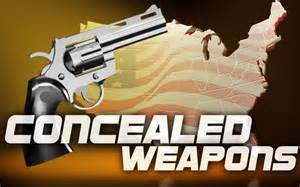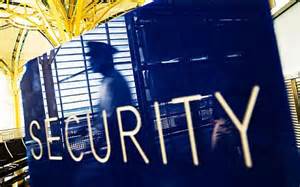
Do it right the first time, because you won’t get a second chance.
“With more than 2 million private security officers across the country protecting everything from shopping centers and office buildings to high-rise parking structures and bowling alleys, it is almost certain that sooner or later a security officer will be the first responder to a crime scene. Like police officers who encounter crime scenes, the actions taken or not taken by security personnel can literally make the difference between identifying the perpetrator(s) and successful prosecution or the case ending up in a cold-case file indefinitely.”
This article is the second in a series of articles designed to give the security officer, whether he or she is new on the job or has many years of service, a fundamental and practical primer on crime scene response. The first article introduced the reader to several fundamental forensic principles and discussed the first priorities of security personnel upon discovering any crime scene. This article discusses the importance of immediately establishing a command presence at crime scenes and the importance and challenges of securing a crime scene. The third and final article in this series will discuss turning over control of the scene to law enforcement, documenting actions and observations, and assessing the response.
Establishing a Command Presence: What it is and why is it important?
All crime scenes are different. Some may be chaotic and located in an urban environment with lots of gawkers and concerned citizens around. Others may be in rural or isolated areas or in areas with restricted access. Regardless of the physical location or type of crime scene, someone needs to take charge and maintain control of the crime scene until law enforcement arrives. In some jurisdictions this will be mere minutes, but in many jurisdictions it may take considerable time before law enforcement arrives. While security personnel generally do not have powers granted to police officers, they are viewed by the public as authority figures and are usually the best person to assume control. Upon arriving at a crime scene, the security officer could loudly proclaim “I am in command” to anyone within hearing distance, but the best way to exercise initial command and control over a crime scene is not by being loud, but by establishing a command presence.
What is command presence?
Command presence is a somewhat nebulous term in that many people define it differently – but everyone knows it when they see it. Command presence starts with the way you carry yourself. It is the way you project and exude confidence not by barking out orders or talking loudly, but by conveying a feeling to everyone around you that you are in control of the situation despite the circumstances. In emergency situations the essence of command presence is the ability to demonstrate self control and project a calm, confident, and deliberate demeanor. When people look at you and assume that you know what you are doing you have established a command presence. Conversely, hesitating, acting confused, or acting indecisive does not convey a command presence.
By following time-proven crime scene response protocols and understanding the basic forensic and criminal investigation principles discussed in the first article in this series, you can establish a command presence even if you suddenly encounter a chaotic and gruesome crime scene and it is your very first day on the job.
Remember the points discussed in the first article in this series:
- The significance of Locard’s Exchange Principle and the theory of persistence;
- The “Golden Hour” in criminal investigations;
- Access the crime scene. STOP, LOOK, LISTEN, and SMELL.
- Determine if the scene is “hot” and decide whether to confront the suspect(s) or watch and report;
- Provide medical care when necessary and feasible.
Securing the Crime Scene.
The Theory of Transfer and plain old common sense tells us that crime scenes often contain physical evidence that can lead to the identification and arrest of the perpetrator(s). Isolating and protecting the crime scene as soon as possible so that no physical evidence is disturbed is crucial. If proper care is not taken to protect a crime scene, evidence can be destroyed or contaminated. This will severely hamper law enforcement’s ability to find, apprehend, and prosecute the perpetrators.
For the initial security responder, isolating and protecting the crime scene involves determining as quickly as possible what encompasses the crime scene, directing or escorting unauthorized persons from the crime scene, and setting up barriers preventing unauthorized persons from entering the crime scene.
Establishing a perimeter around a crime scene can be challenging because it is necessary to control access to the crime scene right away and secondary crime scenes may not be immediately recognizable. For this reason, start at the core of crime scene (e.g., dead body, torched vehicle, pool of blood, etc.) and establish a perimeter outward beyond what is reasonably believed to be the outer boundary of the crime scene. Cordon off the entire block, or series of blocks, if necessary or practical. Crime scene perimeters can always be reduced in size if necessary but it is difficult to expand boundaries.
There are many methods that can be used to isolate and protect a crime scene. Sometimes it is as simple as closing a door or gate or standing guard over an area. Traffic cones, yellow crime scene or caution tape, ropes, vehicles, and other equipment can be used if available. Large barriers that already exist such as walls and gates are great for making boundaries are well. Be creative and use what is available.
Once you have established a perimeter you are responsible for maintaining control of the crime scene until law enforcement arrives. Maintain your command presence and keep watch to make sure that no one circumvents your efforts at preserving the scene.
Humans are curious by nature and may be attracted by the “excitement” of the crime scene. They may want to get a closer look at the scene. Family or friends of any potential victims may be present and may want to take a close up look at the victim or touch the victim. Members of the media can sometimes show up at crime scenes quicker than law enforcement and may try to sneak exclusive shots.
It may be difficult to convince people to stay out of the crime scene. If the crime scene is on public property, as a private security officer you may not have any specific lawful authority to restrict access to the crime scene. But, if you maintain a command presence few people will challenge you. If someone challenges you, be firm but remain calm and polite. Let them know that the police are in-route and they should talk to the responding officers when they arrive about entering the crime scene. This will usually appease the person.
Summary.
Taking charge of the crime scene by establishing a command presence is the first step in securing a crime scene. Understanding basic forensic and criminal investigation principles and following established crime scene response protocols, will give you the confidence and knowledge base to “take charge” of a crime scene and will allow you to preserve the evidence until law enforcement arrives.




